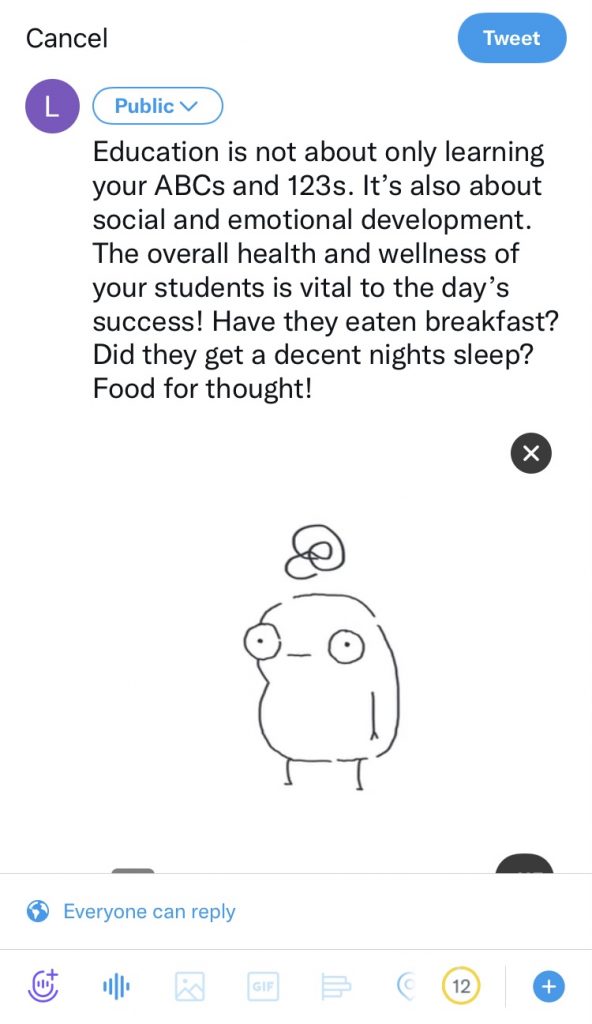Predictive Text
A mini recording of the micro-blog via Twitter

Microblog post on Twitter
Reflection
I have been an avid user of other microblogging networks such as Instagram and Facebook but I would consider myself more of an observer than a blogger. When Instagram first was released, I was microblogging often, sharing moments of my life often. Today, I am finding that I am posting less about my personal life and value to idea of privacy. Also, do people really care about what I am doing on the weekend? I have always wondered how my posts could have a positive and even negative impact on their perceptions of me? Hence, the primary reasons for stepping away from the microblogging.
I used Twitter as the platform for this microblogging task. I have to admit, I am new to the Twitter world. I am noticing that Twitter is a network of a variety of community members all brought together for a similar purpose. I am following accounts that are either education, ADST, and/or STEM related. I am so impressed with the resources and streams of thoughts these bloggers are posting to share with others.
When I was creating my statement on Twitter, I wrote my thoughts based on what I have heard repeatedly in professional development workshops, read in books, and from fellow teaching colleagues. I continue to relay this message to parents during conferences to reiterate that their child’s social and emotional well being is the most important factor to their success in learning. The statement I generated most definitely spoke in my voice and I am a firm believer of this statement.
As for the auto-complete algorithms, I noticed that Twitter starts off with a writing prompt to the microblog which is, “What’s happening?” It tracks the number of characters you start inserting into the post and sends you a motion alert when you are close to running out of space. I ran out of space and had to modify my post. The system auto-corrected my spelling errors with words that are related to my statement (you can see this in the video clip). Yet, it doesn’t catch everything because I have come across many tweets that include spelling errors and/or grammatical errors. This confirms that the auto-generated algorithms are not perfect. Human interference is still required for the purpose of proof-reading your own work. If a message in a microblog was full of syntax and spelling errors, the audience would lose interest very quickly! One of my biggest pet peeves is finding errors in text that have been published in books. Do you agree? I inserted a simple GIF into my microblog in the hopes of expressing my thoughts in a visual representation. I will probably feel this way after the first week back at school.
